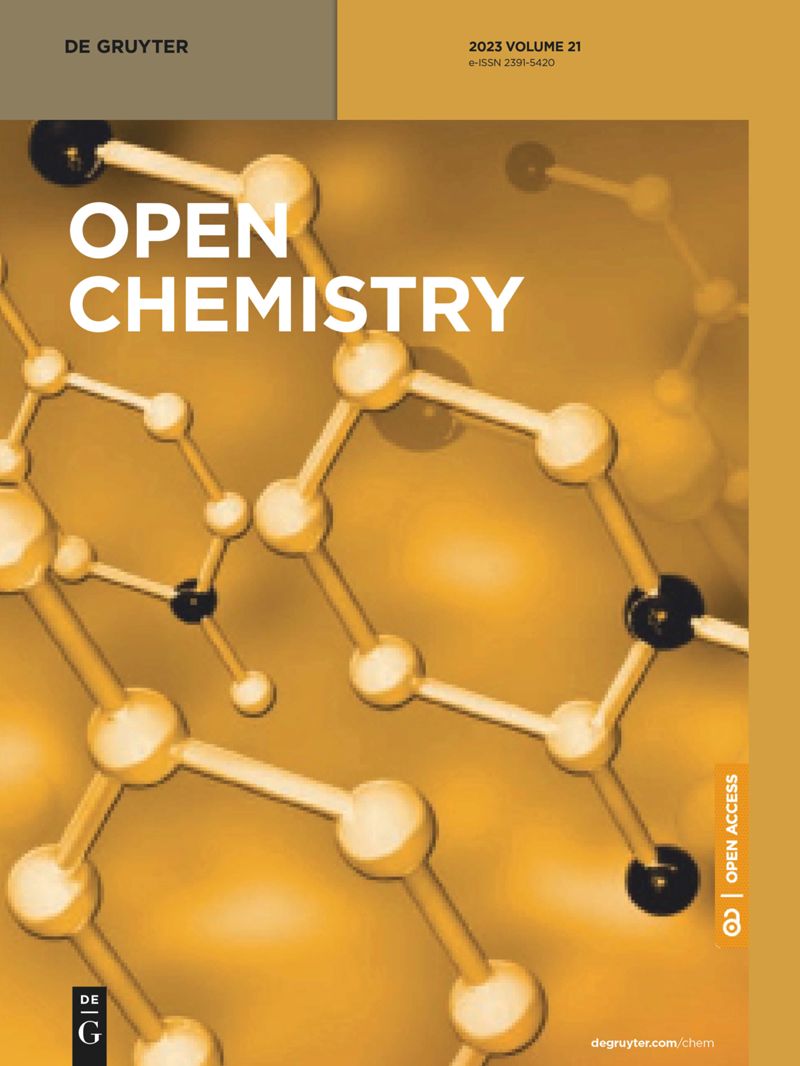Biosynthesis and screening of cobalt nanoparticles using citrus species for antimicrobial activity
IF 1.9
4区 化学
Q3 CHEMISTRY, MULTIDISCIPLINARY
引用次数: 0
Abstract
The synthesis of the nanomaterial is crucial for its characteristics, as well as physiological features. Green nanoparticle production, which reduces metal ions using natural extracts rather than industrial chemical agents, has been created to lower costs, minimize pollution, and improve environmental and human health safety. An aqueous and methanolic extract of a combination of利用柑橘类生物合成和筛选具有抗菌活性的钴纳米粒子
纳米材料的合成对其特性和生理特征至关重要。绿色纳米粒子生产是利用天然提取物而不是工业化学制剂来减少金属离子,其目的是降低成本、减少污染、改善环境和人类健康安全。本研究利用柑橘皮和柠檬皮的水提取物和甲醇提取物进行钴纳米粒子的绿色合成。采用紫外可见光、傅立叶变换红外、X 射线衍射(XRD)、扫描电子显微镜(SEM)等技术对制备的钴纳米粒子进行了描述。X 射线衍射研究揭示了钴纳米粒子的晶体结构。钴纳米粒子的扫描电镜图像显示其通常的细分尺寸为 20-30 纳米。使用井扩散法评估了从上述两种植物组合中提取的粗提取物和生物合成的钴纳米粒子的抗菌活性。结果表明,粗提取物和纳米钴颗粒都具有抗菌活性,其中纳米钴颗粒的抗菌活性远高于粗提取物。总之,这些研究结果表明,经过配制的纳米钴粒子处理后,可有效防止不同微生物的滋生。
本文章由计算机程序翻译,如有差异,请以英文原文为准。
求助全文
约1分钟内获得全文
求助全文
来源期刊

Open Chemistry
CHEMISTRY, MULTIDISCIPLINARY-
CiteScore
3.80
自引率
4.30%
发文量
90
审稿时长
6 weeks
期刊介绍:
Open Chemistry is a peer-reviewed, open access journal that publishes original research, reviews and short communications in the fields of chemistry in an ongoing way. The central goal is to provide a hub for researchers working across all subjects to present their discoveries, and to be a forum for the discussion of the important issues in the field. The journal is the premier source for cutting edge research in fundamental chemistry and it provides high quality peer review services for its authors across the world. Moreover, it allows for libraries everywhere to avoid subscribing to multiple local publications, and to receive instead all the necessary chemistry research from a single source available to the entire scientific community.
 求助内容:
求助内容: 应助结果提醒方式:
应助结果提醒方式:


